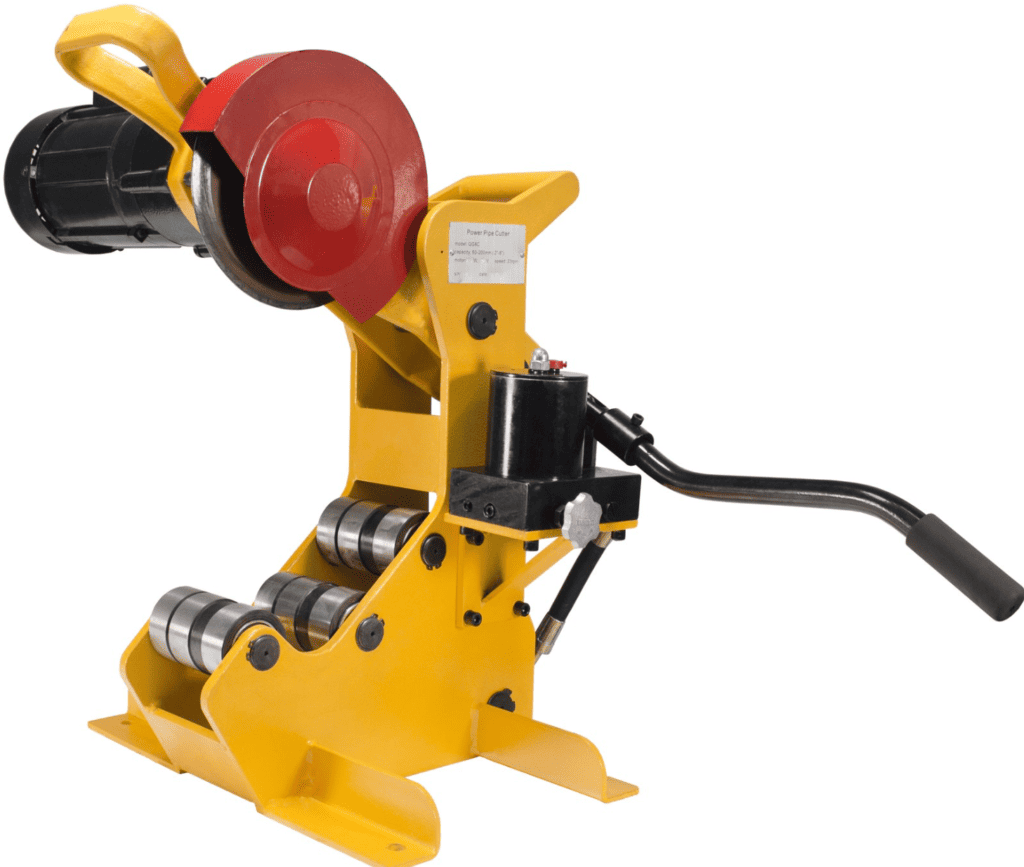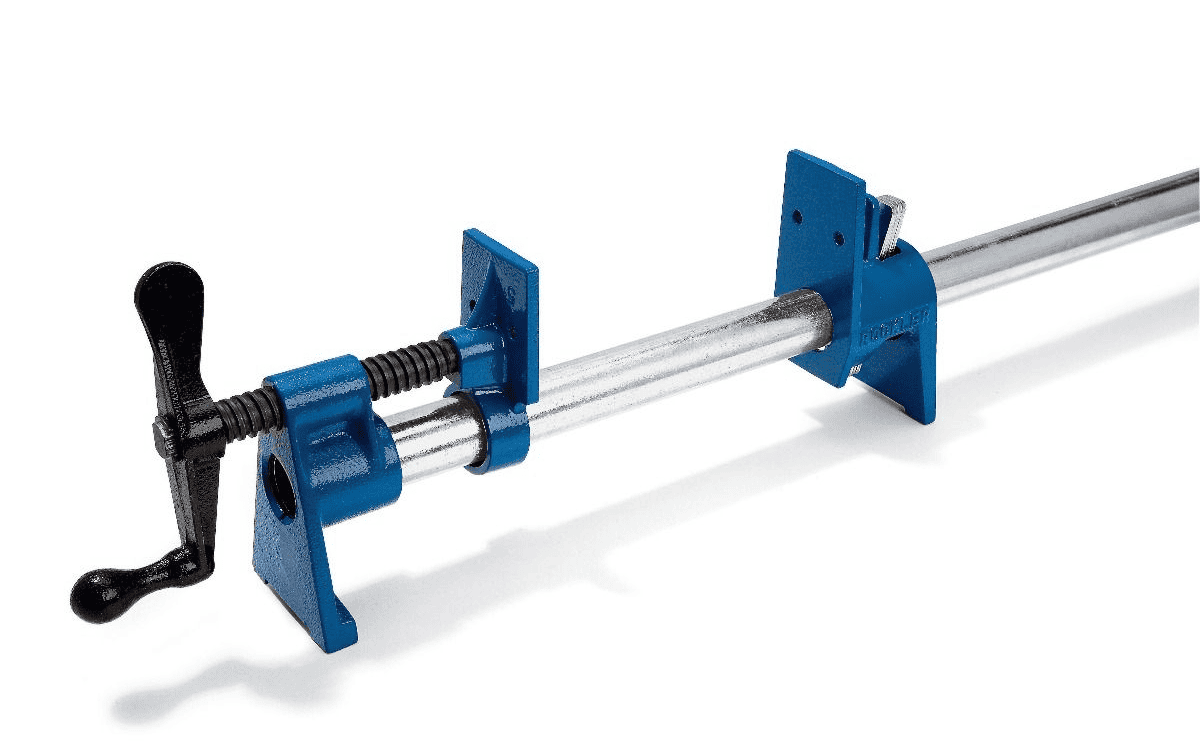This blog post delves into the 10 Best Plumbing Pipe Cutting Tools of 2024 offering a comprehensive guide to help you make an informed choice. We aim to assist you in navigating the expansive market of pipe cutters by focusing on their key features. It will illustrate how the right tool can enhance your business’s productivity and quality of work. Let’s dive in.
Factors to Consider When Choosing a Plumbing Pipe Cutting Tool
Whether you are a new or old business, the following factors will help you up your game against your competitors. Remember, before the tool comes into play, the factors help you decide what will work best for you. So let’s look at the key factors that should influence your decision:

Cutting Capacity
Different pipe cutters are designed for different pipe sizes. Ensure the tool you select can handle the range of pipe diameters your business commonly uses. This ranges from smaller PVC pipes to much larger pipes.
Material Compatibility
Some tools, like PVC or copper, are designed specifically for specific materials. Ensure your chosen tool is suitable for the types of pipes you’ll be cutting. For instance, PVC pipe cutters are ideal for cutting PVC pipes, while copper pipe cutters are better for copper pipes. Hence you must get the right PVC pipe cutter for your needs. Maybe even consider electric pvc pipe cutters or battery-powered pipe cutters.
Durability
Look for a tool made from solid materials, such as heat-treated steel blades, to withstand regular use. Consider tools with replaceable blades for long-term usage. Look at it from a long-term investment point of view.
Ease of Use

Pipe cutters should be user-friendly. A PVC pipe-cutting tool with an ergonomic handle and a smooth ratcheting mechanism can make the job way easier and more efficient.
Portability
Consider its weight and size if you need to carry the tool to various job sites. A compact tool that fits in a standard toolbox can be a huge advantage.
Cut Quality
The best pipe cutters create clean, smooth cuts without leaving rough edges that could interfere with fittings and connections.
Top 10 Best Plumbing Pipe Cutting Tools for 2024
Coming to what you have been waiting for, the best in their class for pipe cutting in 2024. The world has advanced, and so have the tools around you. Here is how:
Sawzall
Sawzall, a reciprocating saw, is an incredibly versatile tool for cutting through various materials, including large-diameter pipes. Its aggressive cutting action is useful for bulk cutting, and with the right blade material, it can effortlessly slice through metals such as copper, stainless steel, and even aluminum, which are commonly used in the plumbing industry.
Hand Saw
Hand saws are excellent for cutting pipes made of softer materials like PVC. These tools provide the control needed for precise cuts, particularly in tight spaces where other cutting tools may not fit. Their compact size and portability make them a staple in every plumber’s toolbox.
Angle Grinder

Angle grinders are power tools known for their high cutting speed and accuracy. They are perfect for cutting through heavy-duty materials such as carbon steel pipes. Moreover, you can also use them for bevelling edges for welding, making them a valuable tool in many pipe fitting and metalworking applications.
Hacksaw
Hacksaws are versatile cutting tools that can handle a variety of pipe materials, from PVC to brass and stainless steel. They offer a combination of precision and ease of use, making them suitable for straight cuts and more complex pipe-cutting tasks.
Pipe Cutter
Pipe cutters are designed to create clean, straight cuts in pipe materials. They are ideal for achieving precise cuts in pipes of different diameters, from small PVC pipes to larger metal ones. With a high-quality pipe cutter, you can achieve smooth cuts that are ideal for efficient pipe connections.

Tubing Cutter
Tubing cutters, similar to pipe cutters, are designed for precise cutting but are specifically engineered for smaller diameters and softer materials like PVC or multilayer tubing. Their compact design makes them perfect for cutting in tight spaces and provides a clean, burr-free cut.
Pipe Reamer
Pipe reamers are used to smooth out the inner diameter of a pipe after a cut has been made. This ensures that there are no burrs or rough edges inside the pipe that could cause leaks or blockages. It’s an essential tool in the plumbing industry for ensuring high-quality pipe installations.
Pipe Threading Kit
A pipe threading kit is essential for cutting threads into the ends of pipes, allowing them to be screwed together. This tool is crucial for creating secure, leak-free connections in metal piping systems. Threading kits usually come with a variety of dies to handle different pipe sizes.
Pipe Clamps

Pipe clamps are not cutting tools per se, but they play a vital role in ensuring accurate and safe cuts. They secure the pipe in place while it’s being cut, reducing the risk of slips and uneven cuts. In applications where precision is paramount, pipe clamps are invaluable.
Pipe Deburring Tool
After you have cut PVC pipe, especially a metal one, sharp edges or burrs can be left behind. A pipe deburring tool is used to smooth these out and ensures the installer’s safety and the pipe connection’s efficiency section. It’s a tool that ensures the finish of the cut is as good as the cut itself.
Applications of Plumbing Pipe Cutting Tools
Not sure how your business can benefit from the best pipe-cutting tools? Here is how some sectors take advantage of the tools we discussed above:
Automotive
In the automotive industry, plumbing pipe-cutting tools are critical for the manufacturing and assembly of various components. The precise cutting, threading, and deburring of pipes are required in constructing fuel lines, hydraulic systems, and exhaust systems. Tools like Sawzall and angle grinders provide efficient and precise cuts in these applications.
Appliance and Rapid Manufacturing
Plumbing pipe-cutting tools are indispensable in the manufacturing of household appliances. These tools are used in creating and assembling components for appliances like water heaters, air conditioners, and washing machines, where precise and smooth cuts are necessary. Pipe cutters and tubing cutters are particularly useful here due to their precision and ability to handle different material types.
Shipbuilding Industry

The shipbuilding industry utilizes plumbing pipe-cutting tools to create and maintain extensive piping systems. These tools ensure precise cuts and effective con, from water distribution systems to fuel inspections. Hacksaws and angle grinders are often used due to their ability to handle heavy-duty materials.
Heavy Industry and Transport
In heavy industries like construction and transport, these tools are used in building infrastructure and vehicles. Pipe-cutting tools are crucial for tasks such as cutting and fitting pipes for plumbing systems, heating systems, and even large-scale irrigation systems. The robustness and versatility of tools like Sawzall and angle grinders make them ideal for these heavy-duty applications.
Oil and Gas
In the oil and gas industry, pipe-cutting tools are crucial in pipeline construction and maintenance. The ability to cut and prepare pipes accurately is vital to ensure safe and efficient oil and gas transport. Here, pipe cutters and threading kits are essential for creating leak-proof pipe connections.
How to Use a Plumbing Pipe Cutting Tool
Here’s a basic step-by-step guide on how to use a plumbing pipe-cutting tool, particularly a pipe cutter:
- Identify Pipe Material and Size: Different pipe-cutting tools suit certain materials and sizes better. Ensure you have the correct tool for your task.
- Mark Your Cut: Measure and mark the exact spot where you want to cut the pipe. You can use a marker for this.
- Secure the Pipe: To prevent the pipe from moving while cutting, secure it in a vise or with pipe clamps.

- Position Your Pipe Cutter: Place the pipe cutter around the pipe aligning its blade with your mark.
- Tighten the Cutter: If you’re using a manual pipe cutter, there’s usually a knob you can tighten to bring the blade into contact with the pipe.
- Start Cutting: Rotate the pipe PVC cutter tool around the pipe, applying consistent pressure. This will score a groove into the pipe.
- Continue Cutting: Keep rotating and tightening the pipe cutter gradually until you’ve cut all the way through the pipe.
- Deburr the Cut: After cutting, sharp edges or fragments might be left on the pipe. Use a pipe deburring tool or a file to smooth these out.
- Clean Up: Always clean your tool after use to prolong its lifespan and maintain its effectiveness.
Remember to follow the specific instructions that come with your particular tool, as different brands and models may have slightly different usage guidelines. Additionally, always ensure to wear protective equipment, including gloves and safety glasses, while operating any cutting tool.
How to Maintain Plumbing Pipe Cutting Tools
Getting the best PVC pipe cutter is just the beginning. Maintaining your plumbing pipe-cutting tools extends their lifespan and ensures they remain efficient and safe to use. Here are a few tips that will help you achieve this:

- Clean After Each Use: Ensure to remove any debris or residue from your tool after each use. Wipe them down with a clean, dry cloth.
- Lubricate Regularly: Some parts of your pipe-cutting tools, such as the cutting wheel, benefit from regular lubrication. Check your tool’s manual for specific instructions.
- Store Properly: When not in use, store your tools in a dry, clean place. This prevents rust and keeps them in good condition.
- Check for Damage Regularly: Inspect your tools for signs of wear or damage before each use. If you find any, replacing the damaged part or even the entire tool is usually better rather than risking an inefficient cut or injury.
- Sharpen When Needed: Some tools, like hand saws or hacksaws, will require regular sharpening. Use a file or a sharpening tool for this purpose, and always follow the manufacturer’s guidelines.
- Avoid Overloading: Don’t force your tools to cut bigger or harder material than they’re designed for. Overloading can cause serious damage to the tool.
Remember, a well-maintained tool lasts longer and makes your job easier and safer for workers. Also, look out for the best PVC pipe cutters out there. Electric pipe cutters also come with advanced safety features but might cost more.
Safety Considerations When Using Plumbing Pipe Cutting Tools
Operating any tool requires a focus on safety, and plumbing pipe-cutting tools are no exception. Here are some safety considerations to keep in mind when using these tools:
- Wear Protective Gear: Always wear appropriate safety gear, including safety glasses to protect your eyes from flying debris, gloves to protect your hands, and sturdy footwear.

- Ensure Proper Lighting: Work in a well-lit area to clearly see what you’re doing and avoid accidents.
- Secure Your Material: Always ensure the pipe you’re cutting is securely clamped or held in place. Unstable materials can lead to inaccurate cuts or even accidents.
- Maintain Your Tools: Regular maintenance is important for the longevity of your tools and safety. Dull or damaged tools are more likely to slip or break, posing a safety risk.
- Follow Manufacturer Instructions: Always read and follow the manufacturer’s instructions when using a new tool. This will give you information on its correct usage and any safety measures specific to the tool.
- Handle with Care: Remember that cutting tools are sharp. Handle them with care, especially when carrying them or passing them to another person.
- Stay Alert: Stay focused on the task at hand when using the tools. Distractions can lead to mishaps.
Q&A: Common Questions about Plumbing Pipe Cutting Tools
Q: What’s the best tool for cutting PVC pipe?
A: The best tool for cutting PVC pipe depends on your specific needs. Ratcheting PVC pipe cutters are popular for their ease of use, while an electric pvc pipe cutter offers faster, more consistent cuts, particularly for larger-diameter pipes.
Q: How do I choose the right plumbing pipe-cutting tool?
A: Choosing the right plumbing pipe-cutting tool involves considering the type and size of pipes you’ll be cutting, the tool’s cutting capacity, blade material, your budget, and specific features such as a ratcheting mechanism or replaceable blades.
Q: Can a hacksaw cut a copper pipe?
A: Yes, a hacksaw can cut a copper pipe. However, it might not provide as clean or precise a cut as a dedicated copper pipe cutter.
Q: How often should I replace the blades in my pipe cutter?
A: The blade replacement frequency depends on usage and the material being cut. Check the blade regularly for wear and tear. If the cuts start becoming rough or require more effort, it’s likely time to replace the blade.
Q: Can I cut large-diameter pipes with handheld tools?
A: Handheld tools like pipe cutters can handle smaller pipes, but power tools like a Sawzall or angle grinder are often more efficient and precise for large-diameter pipes.
Conclusion
In conclusion, having the right plumbing pipe-cutting tool can significantly enhance your workflow, accuracy, and productivity. Whether you’re dealing with PVC, copper, or multilayer tubing, a dedicated cutting tool can deliver clean, precise cuts while maintaining user safety. It’s crucial to consider factors such as cutting capacity, blade material, and the tool’s overall build quality when choosing the best fit for your needs.
Unleash your business potential with top-tier cutting tools. Start your journey with Baison Laser today!
At Baison Laser, we understand the importance of high-quality cutting solutions for your industry-specific needs. Our range of laser cutting and handheld welding machines ensures precise and efficient operations. So why wait? Request an instant quote or contact us for further assistance. We’re eager to help you revolutionize your production process.





